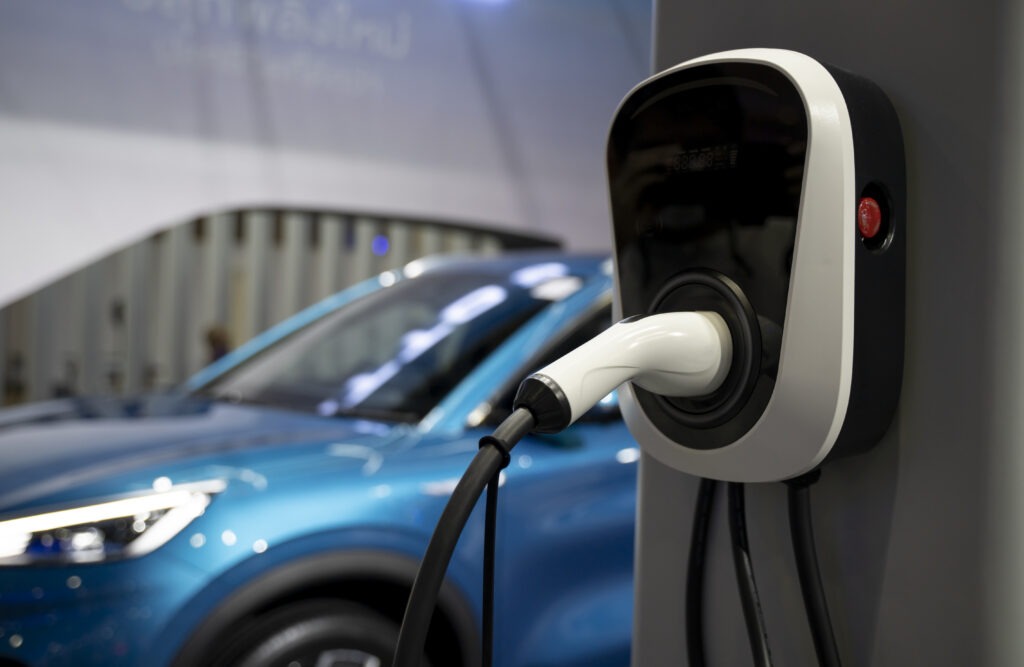What were the most popular EVs in China in June?
09 August 2024

Electric vehicles (EVs) achieved huge volume and share growth in the Chinese new-car market during June. José Pontes, data director at EV Volumes, investigates the most popular models with Autovista24 journalist Tom Hooker.
A total of 875,904 EVs, consisting of plug-in hybrids (PHEVs) and battery-electric vehicles (BEVs), took to China’s roads in June. This equated to a growth of 23% year on year. Plug-ins took a best-ever market share of 49.9% in the month, with BEVs alone accounting for 28% of new-car deliveries.
PHEVs were mostly responsible for this improvement. The technology surged 70% in the month, reaching approximately 393,000 registrations. Meanwhile, BEVs posted a marginal improvement of 1% with roughly 482,500 deliveries.
The market share of plug-in hybrids expanded rapidly, doubling from 11% in June 2023 to 22% in June 2024. Meanwhile, BEVs recorded slower share growth, climbing to 24% from 20% a year earlier.
Between January and June, around 4.3 million EVs were registered. This is a significant distance from the 3.3 million deliveries recorded at the same time last year. Helped by a strong performance in June, EVs took a 43% share of the new-car market. BEVs were responsible for 25% of deliveries.
All-electric vehicles accounted for 55% of the plug-in market in June, below this year’s current average of 59%. The popularity of PHEVs in the Chinese market is clearly rising.
The market still has plenty of room for growth in the second half of the year. This means the plug-in share should end 2024 at around 50%. Looking further into the future, the Chinese market is also expected to be fully electric around 2030, if not sooner.
BYD’s super Song
The BYD Song was China’s best-selling EV in June, thanks to 52,227 registrations. The midsize SUV also topped the overall new-car table as it benefitted from price cuts. Just 2,794 units were attributed to the BEV version.
The Song was one of seven BYD models in June’s best-selling plug-in top 10. It was also the first of four offerings from the carmaker in the overall top 10 which includes internal-combustion engine (ICE) vehicles.
However, the D-segment leader may face tough internal competition in the coming months. The recent BYD Song L and Denza’s N7 may impact volumes, while the Sea Lion 07 is already cannibalising sales.
So, the Song is unlikely to keep posting around 50,000 units a month, a necessary target to lead the Chinese market.
Second place in the EV and overall table went to the Tesla Model Y, with 44,110 deliveries. The crossover is keeping the brand relevant in the Chinese market.
The BYD Qin Plus reached third with 38,901 registrations, including 8,323 BEV units. It took the same position on China’s overall table. This meant that both charts had D-segment EVs filling their top three positions.
The midsize sedan is benefitting from being the first model to receive price cuts from BYD. Although competition is coming from its new siblings, the Qin L and Seal 06 PHEV, demand for the Qin Plus is expected to stay strong. This is while keeping its rivals, the Tesla Model 3, Wuling Starlight and GAC Aion S, at a safe distance.
EV domination
The BYD Seagull came fourth after posting 35,201 deliveries. Despite some production being exported overseas to regions like Latin America and Asia-Pacific, the model is expected to continue featuring in China’s EV top 10. The Seagull may also be launched in Europe towards the end of the year and rebadged as a Dolphin Mini.
The city car came fourth in the overall table, meaning the most popular ICE model only managed fifth. The BYD Seagull was one of six EV offerings in the top 10. Furthermore, the city car led the overall A-segment, more than 25,000 units ahead of its nearest competitor, the Wuling Mini EV.
The BYD Yuan Plus, finished fifth in June, with 23,918 registrations. The crossover could see its volumes impacted by the upcoming launch of the BYD Seal 06 GT hatchback.
The Yuan Plus was the third best-selling C-segment car in the month, behind two ICE models. However, this was a one-off occurrence in June. Every other segment saw EVs take the top three positions, with a BYD EV taking at least third in every category.
Sixth in the plug-in top 20 went to the Li Auto L6, in just its third month on the market. The SUV achieved 23,864 registrations during June.
The BYD Han took eighth, with 18,698 deliveries. It was the month's best-selling E-segment model, meaning the carmaker topped three out of five segments.
The Tesla Model 3 came ninth with 18,151 registrations, its best result so far this year. This was the second of only two foreign models in China’s EV top 20. Rounding out the top 10 was the BYD Qin L in its first full month of sales, with 18,021 deliveries.
Record results
The Aito M9 scored a record result in July to place in 13th (16,525 units). Of this total, 1,853 belonged to the BEV version. The flagship SUV is the marque’s most recent model and is expected to be a frequent presence in the table. It is also a strong contender to lead the E-segment.
Taking advantage of its recent refresh, the Zeekr’s 001 claimed in 14th place with 14,383 units. The Xiaomi SU7 came 15th, with 14,296 registrations. This was the first time the sedan passed the five-digit threshold. The SU7 is expected to jump further up the table and could reach the top five in a few months.
In 18th was the Wuling Bingo, with 11,175 deliveries. It led the B-segment, benefitting from two BYD models splitting sales, the Dolphin (8,429 units) and the Yuan Up (8,392 units). Both landed outside the top 20.
Also outside the table was the Nio ET5, which reached a record 8,557 registrations in June. Meanwhile, the BYD Seal 06 posted 7,625 deliveries in its first full month on the market.
Looking at foreign OEMs, the BMW i3 achieved a record 6,952 units, while the Volkswagen (VW) ID.4 had a year-best score of 6,854 registrations. Lastly, the BYD Sea Lion 07 reached 5,193 units in its first full month of sales.
Stable top three
In the first half of 2024, the BYD Song was the most popular EV in China. The model recorded 292,138 deliveries and made up 6.8% of the overall plug-in market. Its sibling, the Qin Plus, secured second with 220,008 registrations.
Despite gaining ground on the Qin Plus in June, the Tesla Model Y took third. Thanks to 210,817 deliveries, the crossover was comfortably ahead of the BYD Seagull in fourth (172,017 units). The city car had extended its advantage over the BYD Yuan Plus in fifth (118,303 units).
In sixth, the Aito M7 (106,540 units) was under pressure from the rising BYD Destroyer 05 PHEV (106,137 units). There were just over 400 units separating the two, meaning a position change could occur in July.
The first move in the top 20 came from the Aion Y, as the compact crossover gained a spot in 10th (74,241 units). Meanwhile, the Tesla Model 3 profited from an expected performance peak in June, jumping three positions to 11th (70,500 units).
The Aion S moved up to 14th during the month, confirming a positive month for the GAC sub-brand. The D-segment model reached 65,297 registrations from January to June. Rising two spots to 16th was the Aito M9, with 60,942 deliveries.
There was a new entrant to the top 20, as the Zeekr 001 came 19th (54,450 units). The flagship model is the seventh full-size model in the year-to-date table. This makes it the most represented segment in the chart.
Subscribe to Autovista24’s daily email to find out which brands and manufacturing groups succeeded in China in June.



